How to Get Your Food Product in Stores Quickly: Making a Nutrition Facts Label [caption id="attachment_623" align="aligncenter" width="677"]
 Creating a nutrition facts label is an important part of getting your product in stores. Photo credit: Flickr user Tony Webster.[/caption]
You’re almost there. After years spent selling your product at the farmer’s market and tweaking it to perfection, now it’s time to reach out to store buyers and see if you can get your product on retail shelves. But before you know it, you get a call from a buyer who sampled your product at the farmer’s market. She wants you to come into her store and give a pitch—in two days. The only problem is you don’t have a nutrition facts label.
The FDA requires that all food products sold in stores have a nutrition facts panel, and therefore it is integral that you have one for your pitch. After all, buyers need this information in order to decide whether or not they feel your product would sell to their customers. They also want to see that you are well prepared so that, if they accept your product, they can get it onto shelves in a timely matter. So, how do you get your label ready in time? It’s simple—use web-based nutritional analysis software.
Creating a nutrition facts label is an important part of getting your product in stores. Photo credit: Flickr user Tony Webster.[/caption]
You’re almost there. After years spent selling your product at the farmer’s market and tweaking it to perfection, now it’s time to reach out to store buyers and see if you can get your product on retail shelves. But before you know it, you get a call from a buyer who sampled your product at the farmer’s market. She wants you to come into her store and give a pitch—in two days. The only problem is you don’t have a nutrition facts label.
The FDA requires that all food products sold in stores have a nutrition facts panel, and therefore it is integral that you have one for your pitch. After all, buyers need this information in order to decide whether or not they feel your product would sell to their customers. They also want to see that you are well prepared so that, if they accept your product, they can get it onto shelves in a timely matter. So, how do you get your label ready in time? It’s simple—use web-based nutritional analysis software.
 Creating a nutrition facts label is an important part of getting your product in stores. Photo credit: Flickr user Tony Webster.[/caption]
You’re almost there. After years spent selling your product at the farmer’s market and tweaking it to perfection, now it’s time to reach out to store buyers and see if you can get your product on retail shelves. But before you know it, you get a call from a buyer who sampled your product at the farmer’s market. She wants you to come into her store and give a pitch—in two days. The only problem is you don’t have a nutrition facts label.
The FDA requires that all food products sold in stores have a nutrition facts panel, and therefore it is integral that you have one for your pitch. After all, buyers need this information in order to decide whether or not they feel your product would sell to their customers. They also want to see that you are well prepared so that, if they accept your product, they can get it onto shelves in a timely matter. So, how do you get your label ready in time? It’s simple—use web-based nutritional analysis software.
Creating a nutrition facts label is an important part of getting your product in stores. Photo credit: Flickr user Tony Webster.[/caption]
You’re almost there. After years spent selling your product at the farmer’s market and tweaking it to perfection, now it’s time to reach out to store buyers and see if you can get your product on retail shelves. But before you know it, you get a call from a buyer who sampled your product at the farmer’s market. She wants you to come into her store and give a pitch—in two days. The only problem is you don’t have a nutrition facts label.
The FDA requires that all food products sold in stores have a nutrition facts panel, and therefore it is integral that you have one for your pitch. After all, buyers need this information in order to decide whether or not they feel your product would sell to their customers. They also want to see that you are well prepared so that, if they accept your product, they can get it onto shelves in a timely matter. So, how do you get your label ready in time? It’s simple—use web-based nutritional analysis software.
Choosing a Method of Nutritional Analysis
Products must have a nutritional facts panel that follows current FDA guidelines. For instance, recent changes to the nutrition facts panel in May of 2016 introduced new requirements around bolding, type size, vitamin and mineral declaration, added sugar percentages, and fats—so all labels must follow these specific requirements. This is why it is important to make sure the method of nutritional analysis you choose has FDA approval—that way, you can be certain it gives you accurate nutritional information and up-to-date label templates. With this in mind, your options for nutritional analysis and label creation include FDA-approved CD-ROMs, consultants, food labs, and web-based analysis software. Weighing all the pros and cons of each option can be quite time-consuming, so if time is your main concern, here’s how the options stack up:- Food Labs: Food labs are only necessary if your product is fried or highly processed (in which case they are the only method you can use). It can take up to a month to get your results back from a lab, and it’s time-consuming to package and ship samples of your product.
- Consultant: Private consultants often have different timelines when it comes to nutritional analysis and label creation. Busier ones could take a week or two, and they often charge a premium for rushed orders, so this could be a pricey option.
- CD-ROM: In most cases, you will have to order your CD-ROM online and wait for it to be delivered. Then, you’ll have to take the time to install it on your computer and learn how to use it. CD-ROM nutritional analysis tends to be cumbersome and often comes with a learning curve, meaning you won’t be able to get things done as quickly.
- Web-Based Software: This is your best bet when you are on a tight deadline because once you take a few minutes to create an account, you can make your label almost instantly. Simply search your ingredients in the database or enter your own, adjust your serving size, and with the click of a mouse, you’ll have a complete nutrition facts panel. Plus, if you’re really crunched for time, software like LabelCalc offers the option to outsource it to a nutritional consulting expert.



